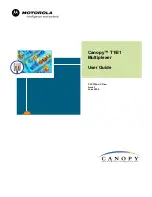
29
Subject to change without notice
Voltage measurements
The maximum input voltage of HM8012
is 600 V
DC
when the COM terminal is to
ground potential, i.e. by connecting
HM8012 to the object to be measured, the
sum of the measurement voltage and that
of the COM terminal with respect to
ground shall not exceed 600 V
DC
. In this
case, the maximum voltage value
between the COM terminal and ground
is 250 V
DC
.
For AC voltages, the true rms value of the input
voltage will be measured, and the DC component
eliminated in AC mode. If possible, the COM ter-
minal
shall be connected directly to ground
or to the point of the measurement circuit having
the lowest potential. The 0.5 V and 5 V voltage
measurement ranges are protected from input
voltages to 300 V
rms
; all the other ranges are
protected to 850 V
rms
.
During measurements on circuits using inductive
components, inadmissible high voltages may
appear when the circuit is opened. In such cases,
take steps to prevent the destruction of HM8012
by inductive voltages.
Input impedance in the DC range
To make the most of the excellent linearity of the
measurement system, the input impedance for
voltage measurements is very high (1 G ) for some
ranges. For instance, this makes possible to per-
form accurate measurements on ranges of up to
±5 V, even when the internal impedance of the
source to be measured is high. For instance, for
the 500 mV range, an internal 5 M source
resistance will induce a maximum error of 150 µV.
Indeed, switching to the 50 V range will cause the
input voltage to drop because of the input
impedance of 10 M which can cause the
multimeter to switch to the lower range and so
on. After some swings, the instrument goes into
MANUAL mode.
Current measurement
For current measurements, the connection of the
object to be measured is made across the mA
terminal or to the A
terminal for currents of
up to 10 A. The AUTO mode is inhibited because
there is only one range.
The HM8012 should be connected to the circuit
whose potential with respect to ground is lowest.
For safety reasons, the COM terminal
must
not exceed 250 V
DC
with respect to ground.
Current ranges are protected by fuse against
overloads. If the fuse blows, the cause of the
overload must be eliminated. In case of an open
fuse the instrument has to be sent in for repair.
A change of the fuse by the customer is not
permitted.
AC voltage measurement
The instrument measures the true rms value of
the input voltage with or without its DC
component. To measure low voltages, or in the
event of high noise, it is necessary to use a
shielded cable.
Take into account the input impedance of the
multimeter. It is 1 M in the AC mode and 10 M
in the AC + DC mode. In addition, there is a slight
measurement difference between these two
modes due to the input circuits. If AC mea-
surements without a DC component are to be
made, it is preferable to use the straight AC
mode.
When the multimeter is used in AUTOMATIC
mode, there can be continuous swinging between
two ranges for frequencies above 30 kHz, be-
cause of the frequency response difference of the
two ranges. After some swings, the instrument
goes into MANUAL mode.
Resistance measurements
For resistance measurements, connect the
object to be measured between the COM termi-
nal
and the V/ /T°/dB terminal
. There is a
DC voltage across the connection terminals.
Accordingly, only voltage-free objects need to be
measured because the voltages in the
measurement circuit will distort the result. In the
case of low resistance measurements, the OFF-
SET key
can be used to compensate, where
applicable, for measurement cord resistance.
For high resistance measurements, it is ad-
visable to place the resistance to be measured
as close as possible to the measurement termi-
nal or to use a shielded measurement cable
connected to ground.
F u n c t i o n s
















































